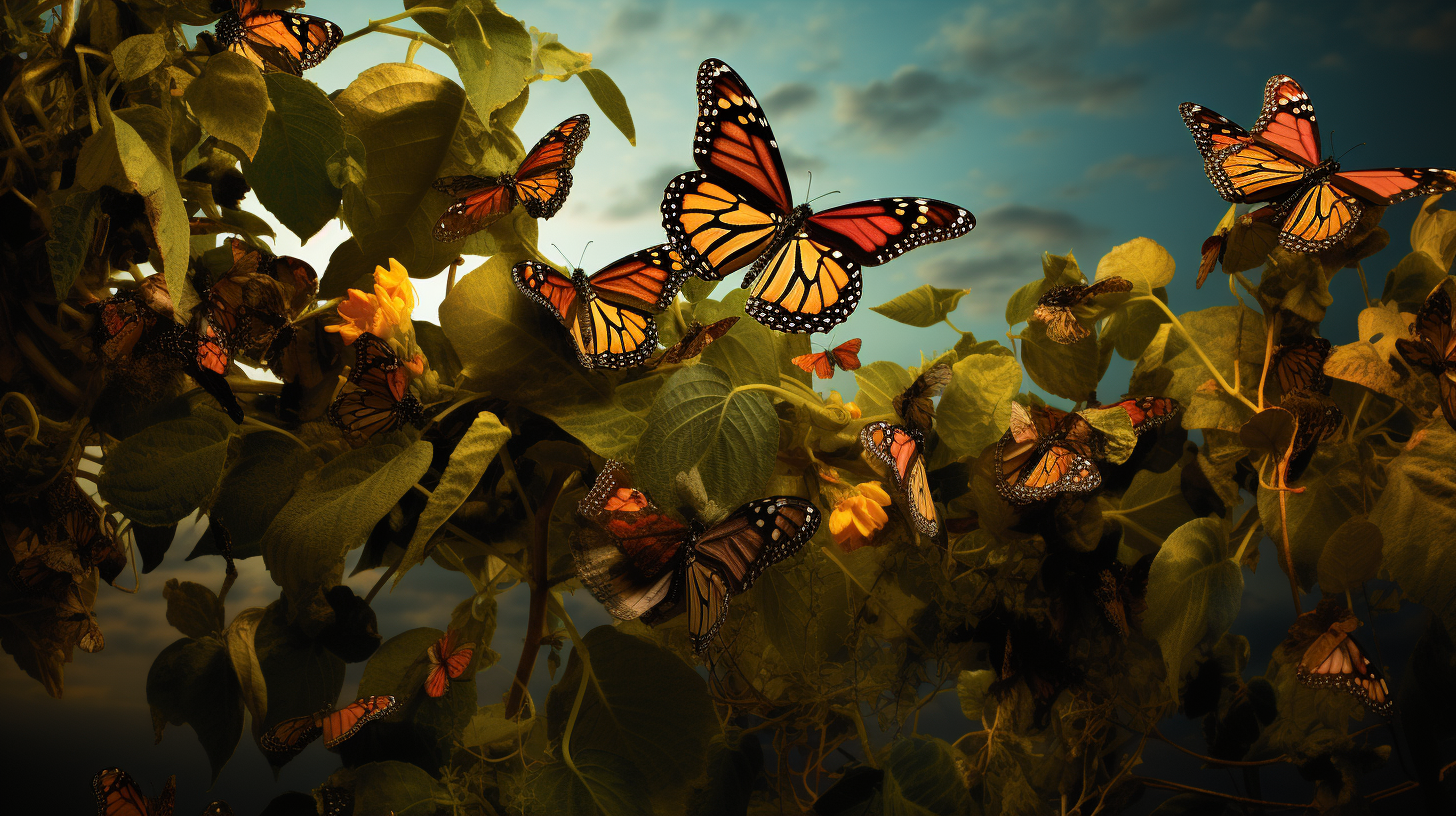Amidst the desolate landscapes and the rampant desecration of our natural world, a peculiar narrative unfolds—one of resilience, mutation, and unexpected survival. In a paradoxical twist of fate, certain insect species are not only enduring our toxic, post-apocalyptical environments but thriving in them. These Monarchs of Mutation herald a narrative of life and adaptability amidst the rubble of our ecological negligence.
The common butterflies, once harbingers of serene meadows, have traded their polychromatic wings for hues that mirror the ashen skies. Researchers have uncovered that certain species now flourish in areas where radiation levels preclude most other forms of life, perhaps an evolutionary gambit to monopolize resources rendered unusable to their kin. ‘Adaptive radiation,’ jokes an entomologist, bitter irony not lost on her. Yet it is not just butterflies—beetles, cockroaches, and ants also form part of this elite caste, their newfound dominions spanning the gamut from chemical wastelands to plastic-ridden beaches.
One remarkable observation comes from the dragonflies. Once the acrobats of air, darting with precision around fresh water streams, they now congregate around acidic lakes, their nymphs metamorphosing in pH levels that would erode the hopeful façade of any conservationist. ‘They are nature’s own testament,’ declares one researcher, ‘to the inexplicable will to persist.’
The bees, stewards of pollination and sadly a dwindling species from our previous reports, have given rise to a new breed. These are not the fuzzy icons of flower gardens, but rugged survivalists, navigating landscapes devoid of the traditional flora, and pollinating what little remains—or what new, peculiar plants have arisen in the post-natural-selection crucible that our world has become. Their industrious buzz now hums a tune of struggle and raw perseverance.
These findings are not merely data points for the curious scientist; they are the hieroglyphics that speak of a possible future. A future where adaptation outpaces affliction, where the muted song of our once-vibrant insect communities morphs into a dissonant symphony of the survivors—the Monarchs of Mutation. Indeed, ‘in a world bereft of our previous entomological companions, these thriving mutants become the new ecological baseline.’
But what of the implications? Amidst the nuclear glow of their triumph, there is the shade of tragedy. This world, where roaches inherit the Earth, is one where ‘natural’ is a term of the bygone. Their success is a jarring emblem of our failure and a cautionary allegory of resilience in an age defined by human folly.
As bioluminescent beetles illuminate the night, now void of man-made lights, our role in this saga merits meditation. Are we the antagonist or a mere observer to the ingenuity of nature’s course? ‘Our legacy,’ muses a philosopher, ‘will be the genes we force nature to favor.’
Through the persisting gloom, these Monarchs of Mutation offer a beacon of adaptation in darkness. However, the specter of a world where the rich tapestry of life has been torn and restitched into a garish mosaic by man’s ecological transgressions is ever-looming. As chroniclers of this green dystopia, it is our silent vow to ensure these stories of survival and mutation ignite a spark of reflection, if not a flame of revolution, in the hearts of our readers. Perhaps, in their tales, we can find the embers of education and a whispered warning against repeating the follies of our past.
